HOW DO YOU FIND A NOVEL?
 Are you currently reading a novel? How did it land on your reading list?
Are you currently reading a novel? How did it land on your reading list?
 Are you currently reading a novel? How did it land on your reading list?
Are you currently reading a novel? How did it land on your reading list?
I’ve written frequently about my admiration for small-press publishing, folks who are driven more by their love of the written word than by any expectation of making a commercial killing. It’s that willingness to simply go with what they love that leads many small presses to build impressive catalogs of work by authors of remarkable talent. This month I’m highlighting another example of this marriage of small press to big talent.
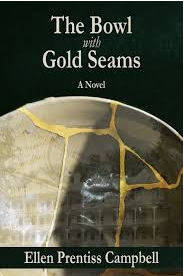 I originally heard about Ellen Prentiss Campbell from several sources almost simultaneously, one of which was our shared publisher. As small presses go, publishers don’t come much smaller than Apprentice House Press, run out of Loyola University. Of unique note, though, Apprentice House is both non-profit and student-run. Students learn by doing; authors get unparalleled input into the creative process behind bringing a traditionally published work into print.
I originally heard about Ellen Prentiss Campbell from several sources almost simultaneously, one of which was our shared publisher. As small presses go, publishers don’t come much smaller than Apprentice House Press, run out of Loyola University. Of unique note, though, Apprentice House is both non-profit and student-run. Students learn by doing; authors get unparalleled input into the creative process behind bringing a traditionally published work into print.
According to the 2011 FBI Uniform Crime Report, 24.8 percent of 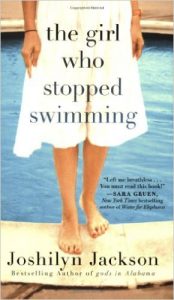 U.S. murder victims were killed by family members. That’s a nearly a quarter of all murders. The U.S. Bureau of Justice Statistics reports that family violence (including assault, murder, robbery, and sex offenses) accounted for 11 percent of all reported and unreported violence between 1998 and 2002. Although we don’t have statistics for the flip side of family passions, anyone who has experienced a tragedy knows the profound role family love and support can play during those times. And also how deep an emotional wound inflicted by a family member can go. Because family relationships are among the most highly charged of any relationships in human experience, families offer the ideal set of characters for a novel’s essential conflict.
U.S. murder victims were killed by family members. That’s a nearly a quarter of all murders. The U.S. Bureau of Justice Statistics reports that family violence (including assault, murder, robbery, and sex offenses) accounted for 11 percent of all reported and unreported violence between 1998 and 2002. Although we don’t have statistics for the flip side of family passions, anyone who has experienced a tragedy knows the profound role family love and support can play during those times. And also how deep an emotional wound inflicted by a family member can go. Because family relationships are among the most highly charged of any relationships in human experience, families offer the ideal set of characters for a novel’s essential conflict.
 So you devoured Elene Ferrante’s tetralogy and now you’re wondering what other international gems are out there—books so good you can’t believe you never heard of them. Well, look no further than Magda Szabó’s The Door. If you like Ferrante, I guarantee you’ll like Szabó.
So you devoured Elene Ferrante’s tetralogy and now you’re wondering what other international gems are out there—books so good you can’t believe you never heard of them. Well, look no further than Magda Szabó’s The Door. If you like Ferrante, I guarantee you’ll like Szabó.
Magda Szabó, who died in 2007 at age 90, was one of Hungary’s most important 20th century writers, widely read and admired at home but only recently getting the love and attention she deserves worldwide. The Door was published in 1987 but not translated into English until 2005, when it appeared in Britain. Last year, the New York Review Books classics offered it up to American audiences in a new, widely praised translation by Len Rix.
As usual, the Chesapeake Chapter of Sisters in Crime served up an excellent program along with lunch at its monthly meeting this July. Presenters were Dru Ann Love of drusbookmusing.com and Kristopher Zgorski of BOLO Books talking about their blogs.
Dru Ann Love is owner/writer at dru’s book musings and at her daytime work as a market research analyst. Her blog is a bright spot among hundreds, it seems, that focus on cozy mysteries which she reviews and discusses. A New Yorker born and bred, Dru Ann is an  avid reader but she also writes poetry, quilts and loves attending mystery fan conventions with readers and authors. Her musings will appear in Crimespree Magazine and her name has appeared in several cozy titles.
avid reader but she also writes poetry, quilts and loves attending mystery fan conventions with readers and authors. Her musings will appear in Crimespree Magazine and her name has appeared in several cozy titles.
A Sense of Place: What We Can Learn From Richard Russo
 When I was in graduate school and working on an early version of my first novel, Hawke’s Point, my thesis advisor asked me if I’d read Richard Russo. I hadn’t, but when he said my writing reminded him of Russo’s, I rushed out to get everything I could lay my hands on. The advisor’s comment was reinforced when a reviewer of Hawke’s Point also cited a similarity to Russo.
When I was in graduate school and working on an early version of my first novel, Hawke’s Point, my thesis advisor asked me if I’d read Richard Russo. I hadn’t, but when he said my writing reminded him of Russo’s, I rushed out to get everything I could lay my hands on. The advisor’s comment was reinforced when a reviewer of Hawke’s Point also cited a similarity to Russo.
6/7/16 — A Cozy and Guilt-Free Escape
I owe a debt of gratitude to public TV because PBS made me a fan of cozy mysteries. I didn’t even know the term when I first met the writer Dorothy Sayers through Ian Carmichael’s portrayal of Peter Wimsey, the upper-crust dilettante who solved murder cases with wit and his trusted valet.
Some people restrict the term cozy mystery to stories that occur in small towns, like Miss Marple’s village of St. Mary Mead, but I think that’s too limiting. The distinction, I think, is what action takes place off the page or off the screen. Cozy mysteries are family entertainment; there’s no graphic violence, no graphic sex, and no reason to cover your eyes.
In my last posting, I highlighted Foreword Reviews magazine and its mission to draw readers to the best of independent publishing. What is perhaps most remarkable in the world of indie publishing is the sheer number of presses operating more or less on a shoestring in an industry whose margins continue to shrink. Indie presses typically don’t make fortunes for their owners, so what makes those people keep at it?
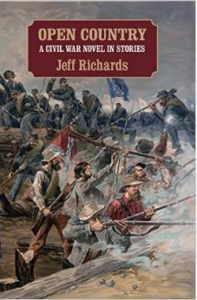 In a word, passion. Okay, perhaps two words, the other being dedication. Both are crucial to persevering in the best-seller-driven world ruled by publishing’s Big Five, but that big-press culture certainly leaves behind underserved readers and underrepresented writing voices, which is where indie presses shine.
In a word, passion. Okay, perhaps two words, the other being dedication. Both are crucial to persevering in the best-seller-driven world ruled by publishing’s Big Five, but that big-press culture certainly leaves behind underserved readers and underrepresented writing voices, which is where indie presses shine.
Passion, dedication, and perseverance all describe Richard Peabody, the force behind Gargoyle, the Washington, D.C.-based
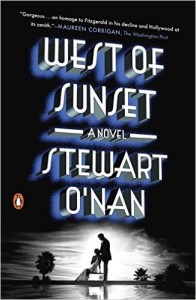 4/7/16 — Stewart O’Nan’s Novel Take on F. Scott Fitzgerald
4/7/16 — Stewart O’Nan’s Novel Take on F. Scott Fitzgerald
It takes a lot of courage for an author to write a fictional book about a writer who’s almost as famous for his life as for his novels. Stewart O’Nan meets the challenge with West of Sunset, a novel about F. Scott Fitzgerald. In O’Nan’s imaginings we’re shown a depth, intelligence, and artistic struggle that meshes beautifully with the outlines of Fitzgerald’s life that his fans know so well.
The 2015 novel is a fictionalized account of the last three years of the famous author’s life. In the opening chapter, the forty-year-old Fitzgerald is no longer the golden boy of the literary set. In poor health and financially strapped, he’s about to leave the East Coast for Hollywood to work as a script-writing hack for MGM.
3/20/16: Celebrating Vibrant Voices in Independent Publishing: 2015 Debut Novelists Caitlin Hicks and Barbara Stark-Nemon
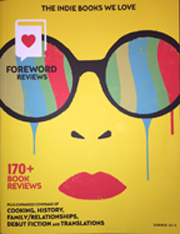 Last summer, eight debut novelists gathered for 30 minutes in the virtual, electronic community of Twitter to compare first-time experiences, discuss the thrill of (finally!) being a published author, and exchange ideas about how to shift from creator to marketer in order to find an audience for our small, independently published books.
Last summer, eight debut novelists gathered for 30 minutes in the virtual, electronic community of Twitter to compare first-time experiences, discuss the thrill of (finally!) being a published author, and exchange ideas about how to shift from creator to marketer in order to find an audience for our small, independently published books.
Geographically far-flung and working in a number of genres, we were brought together by a feature article about our eight books in the Summer 2015 issue of Foreword Reviews magazine, a well-respected quarterly periodical and website that focuses entirely on reviewing work published by independent presses—that is, anything not from an imprint of The Big Five publishing conglomerates.
3/10/2016. BOOK REVIEW—MY BRILLIANT FRIEND BY ELENA FERRANTE
When I learned that Elena Ferrante (a pen name) refused to reveal any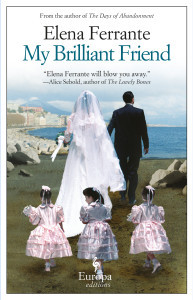 information about herself because she believed her novels should stand on their own, I wanted to applaud. As Mark Willen explained in his post on Late Last Night Books in July, Ferrante believes that “books, once they are written, have no need of their authors. If they have something to say, they will sooner or later find readers; if not, they won’t.” What a refreshing idea. I couldn’t wait to read My Brilliant Friend, the first novel in Ferrante’s Neapolitan tetralogy. Here’s what I found: the novel definitely stands on its own, but it’s almost as difficult to talk about as its enigmatic author.
information about herself because she believed her novels should stand on their own, I wanted to applaud. As Mark Willen explained in his post on Late Last Night Books in July, Ferrante believes that “books, once they are written, have no need of their authors. If they have something to say, they will sooner or later find readers; if not, they won’t.” What a refreshing idea. I couldn’t wait to read My Brilliant Friend, the first novel in Ferrante’s Neapolitan tetralogy. Here’s what I found: the novel definitely stands on its own, but it’s almost as difficult to talk about as its enigmatic author.
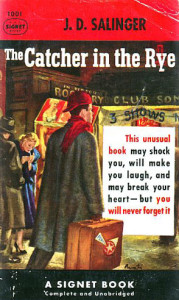 2/7/16 — Another Look at The Catcher in the Rye
2/7/16 — Another Look at The Catcher in the Rye
I don’t recall how old I was when I first read J.D. Salinger’s novel The Catcher in the Rye–fourteen or fifteen, perhaps. Everyone seemed to be reading it then, and afterward, everyone seemed to adapt Salinger’s writing style. English classes became tedious as student after student read his “original” composition in an imitation of Holden Caulfield’s voice.
All of us wanted to be Holden Caulfield. We wanted to travel through New York as he did — alone, with money in our pockets, and at all hours. We wanted to read the books he liked, drink scotch, and call out the phonies. We liked that he was a straight talker, glib and slangy, a no-holds-barred kind of guy, our generation’s John Wayne.
 Reading Bret Anthony Johnston’s Remember Me Like This brought me back to 2003, when kidnap victim Elizabeth Smart was released after eight months in captivity. I was teaching a course in journalism ethics and I asked my students to assess the media coverage, which included 24/7 speculation about why Smart hadn’t escaped earlier and what horrors she’d been subjected to. That led to a vigorous debate over the conflict between the right to privacy and the public’s right to know. I argued that in this case there was no right to know, only prurient interest and morbid curiosity. Not everyone agreed (and certainly not cable news). If only Anthony’s novel had been available then, it would have been assigned reading. It’s the perfect answer to media callousness.
Reading Bret Anthony Johnston’s Remember Me Like This brought me back to 2003, when kidnap victim Elizabeth Smart was released after eight months in captivity. I was teaching a course in journalism ethics and I asked my students to assess the media coverage, which included 24/7 speculation about why Smart hadn’t escaped earlier and what horrors she’d been subjected to. That led to a vigorous debate over the conflict between the right to privacy and the public’s right to know. I argued that in this case there was no right to know, only prurient interest and morbid curiosity. Not everyone agreed (and certainly not cable news). If only Anthony’s novel had been available then, it would have been assigned reading. It’s the perfect answer to media callousness.
12/10/2015. BOOK REVIEW: THE TIDE KING BY JEN MICHALSKI
Jen Michalski is a wonderful storyteller. You could read her novel The Tide 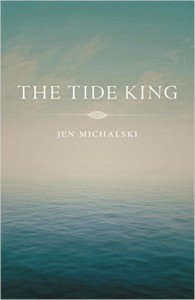 King purely for the characters and events that fit in with the reality we know. One reviewer on Amazon said she’d done that, finding the eternal-life-giving herb in the story unnecessary. If you read the novel that way, you’ll be treated to a beautiful piece of writing with well-developed characters and an exciting plot, but you will miss so much.
King purely for the characters and events that fit in with the reality we know. One reviewer on Amazon said she’d done that, finding the eternal-life-giving herb in the story unnecessary. If you read the novel that way, you’ll be treated to a beautiful piece of writing with well-developed characters and an exciting plot, but you will miss so much.
In her guest blog, “A Jolt of Vertigo,” published on Late Last Night Books last month, Michalski said she found herself writing about the fantastic herb because “sometimes reality is too constricting.” I never thought I would be a fan of magical realism in novels because I’ve always considered myself a true realist, a person who tells it like it is in her writing and her life.
12/7/2015 — Reading and Appreciating Paul Auster
 I’ve become a big fan of the American writer Paul Auster—and not just because his first novella, City of Glass, was rejected by seventeen publishers before finding a home and launching a prolific, thirty-year literary career (and yes, that means I’m a bit late in joining his fan club). I read the New York Trilogy (which includes City of Glass) last year and loved it, but it was only last month that circumstances led to me to pick up another Auster novel, Invisible (2009), which I found even more fascinating.
I’ve become a big fan of the American writer Paul Auster—and not just because his first novella, City of Glass, was rejected by seventeen publishers before finding a home and launching a prolific, thirty-year literary career (and yes, that means I’m a bit late in joining his fan club). I read the New York Trilogy (which includes City of Glass) last year and loved it, but it was only last month that circumstances led to me to pick up another Auster novel, Invisible (2009), which I found even more fascinating.
10/10/2015. BOOK REVIEW—SOMEONE BY ALICE McDERMOTT
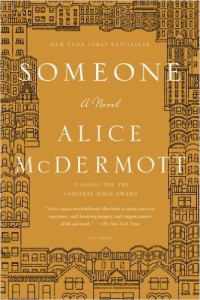 Alice McDermott has written several highly acclaimed novels, including one that won the National Book Award and three others that were finalists for the Pulitzer Prize. She also teaches at Johns Hopkins University in Baltimore, which is only about 20 miles up the road from where I live. Despite her obvious writing skill and her physical proximity, I had never read one of her novels until now. To introduce myself to her work, I chose her most recent novel, Someone, and I don’t regret my choice. Someone took me into the mind of a sensitive, yet strong, woman named Marie Commeford, who searches throughout her life to understand the line between joy and sorrow, a deep but narrow crevasse that seems to open and close at will.
Alice McDermott has written several highly acclaimed novels, including one that won the National Book Award and three others that were finalists for the Pulitzer Prize. She also teaches at Johns Hopkins University in Baltimore, which is only about 20 miles up the road from where I live. Despite her obvious writing skill and her physical proximity, I had never read one of her novels until now. To introduce myself to her work, I chose her most recent novel, Someone, and I don’t regret my choice. Someone took me into the mind of a sensitive, yet strong, woman named Marie Commeford, who searches throughout her life to understand the line between joy and sorrow, a deep but narrow crevasse that seems to open and close at will.
8/10/2015—INTERVIEW WITH PHILIP CIOFFARI, AUTHOR OF DARK ROAD, DEAD END
Philip Cioffari’s novel Dark Road, Dead End, which I reviewed here  last month, piqued my interest in illegal animal smuggling so much that I couldn’t wait to ask Cioffari how he came up with the topic and what strategies, in both research and writing, he used to make the novel so compelling. His sense of the atmosphere of southern Florida and the good and evil that battle there had me hooked on the first page. Cioffari’s answers to my questions appear below.
last month, piqued my interest in illegal animal smuggling so much that I couldn’t wait to ask Cioffari how he came up with the topic and what strategies, in both research and writing, he used to make the novel so compelling. His sense of the atmosphere of southern Florida and the good and evil that battle there had me hooked on the first page. Cioffari’s answers to my questions appear below.
A multi-talented author, Cioffari has written novels, short stories, plays, and screenplays. His previous fiction works include Jesusville, A History of Things Lost or Broken, and Catholic Boys, all published by Livingston Press/University of West Alabama.
7/10/2015. BOOK REVIEW: DARK ROAD, DEAD END BY PHILIP CIOFFARI
I love a novel that teaches me about a phenomenon or a 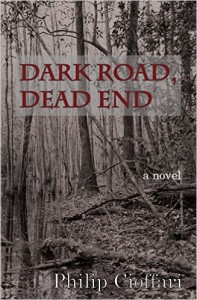 historical event. In my past two posts, I talked about The Tilted World, which introduced me to the Great Mississippi River Flood of 1927. This month I want to talk about another disaster that’s taking place even as I write: the smuggling of exotic and endangered animals, stolen from their natural habitats, into the United States for profit. Dark Road, Dead End, a novel by Philip Cioffari, explores the smarmy world of animal smugglers and the law enforcement officers who risk their lives trying to shut the practice down.
historical event. In my past two posts, I talked about The Tilted World, which introduced me to the Great Mississippi River Flood of 1927. This month I want to talk about another disaster that’s taking place even as I write: the smuggling of exotic and endangered animals, stolen from their natural habitats, into the United States for profit. Dark Road, Dead End, a novel by Philip Cioffari, explores the smarmy world of animal smugglers and the law enforcement officers who risk their lives trying to shut the practice down.
 7/7/15 – Elena Ferrante: Italy’s Most Important Contemporary Writer
7/7/15 – Elena Ferrante: Italy’s Most Important Contemporary Writer
I wish I could introduce you to Elena Ferrante, but I can’t. The best I can do is make a stab at introducing you to her work. To some extent, of course, that is the case with all authors, although some writers appear so often in the media, we can be lulled into thinking we really do know them.
That is not a danger with Elena Ferrante. It’s not just that Ferrante is a pen name or that the author is reclusive. It is that she has, from the start, insisted her identity remain a mystery. When her first novel, Troubling Love, came out in 1991, she told her publisher that writing it was enough.
5/10/2015—BOOK REVIEW: THE TILTED WORLD BY TOM FRANKLIN AND BETH ANN FENNELLY (ONE OF THE BEST HISTORICAL NOVELS I’VE EVER READ)
In March 1927, after months of nearly nonstop rainfall, a levee on the Mississippi River near Greenville, Mississippi, collapsed with more than double the water volume of Niagara Falls. The deluge, combined with flooding from additional breaks in the levee system, covered 27,000 square miles in 10 states up to a depth of 30 feet. Authorities have called it the most destructive river flood in the history of the United States. And yet many people have never heard of it. In their gripping new novel The Tilted World, Tom Franklin and Beth Ann Fennelly have righted that omission and brought the horrors and heroism of the flood to life.